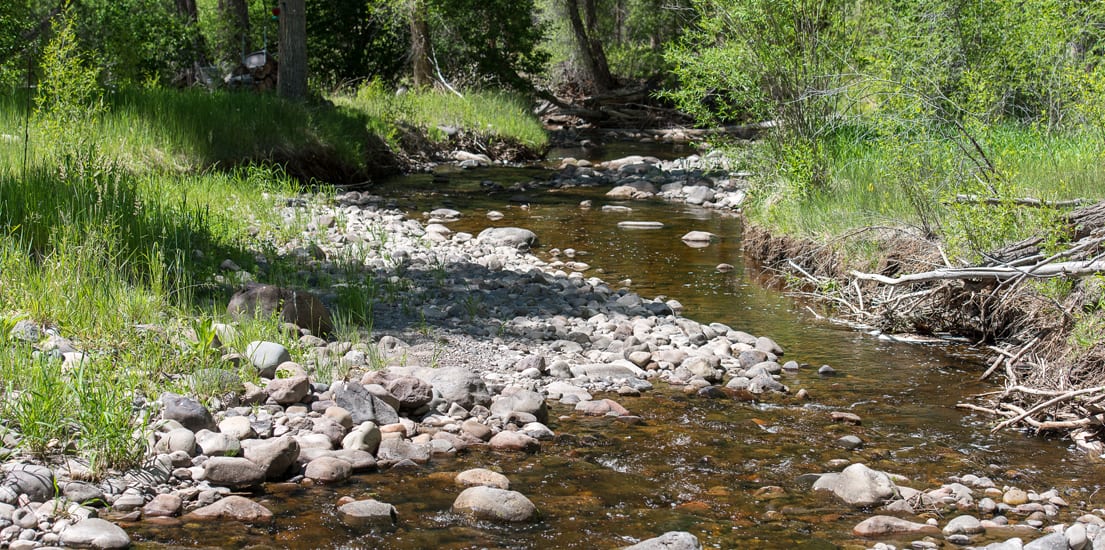Colorado’s Little Cimarron River is a magnificent wild trout stream on its upper reaches. Portions of its middle reaches, however, are dewatered through withdraws during the hot months of summer, segmenting habitat between the upper and lower river. Western Rivers Conservancy has been working in partnership with Colorado Water Trust to return perennial flows to the Little Cimarron. CWT recently wrote a great piece for "Your Water Colorado" blog that explains this project in detail – and how, together, we are making history on this small but important Colorado trout stream.
"When standing on the ranch, you can’t quite see the river. If it’s a good autumn, the snowy peaks of the San Juan Mountains within the Uncompahgre Wilderness Area backstop the narrow valley to the south, and the tops of the turning cottonwoods peek out of a ravine to the west. Just standing there among the cow pies you’d suspect, and be correct, that the river nearby but just out of sight is renewed by those melting snows each spring. The cottonwoods betray the river’s path below the ranch.
During most springs, runoff on the Little Cimarron River that meanders through those cottonwoods fills each water right’s claim to its flows to the brim and then some. Water taken out at the McKinley Ditch headgate upstream winds along the steep slopes and eventually to this tableland, where acres irrigated since federal government patent and first appropriation in 1886 produce hay and cattle. Back at the river, water flows down the Little Cimarron to the Cimarron and eventually to the Gunnison River, upstream of Black Canyon of the Gunnison National Park, and then, finally, to the Colorado River.
As the summer turns to fall, though, the Little Cimarron can often run dry for more than a mile as the mountains stop producing water and diversions from the river lap the very last drops from the stream. Fish, both upstream and down, lose passage or get trapped in pools in the middle.
The challenge is figuring out how to keep the cow pies fresh and the fish wet, the fields green and the rivers blue. Colorado is asking broad iterations of this question all over the state, boiled down to something short with no uniform answer: How can we get the most out of every drop of Colorado’s water?"
Read full article here >
This post appeared on the March 12, 2015 in the Colorado Foundation for Water Education blog


